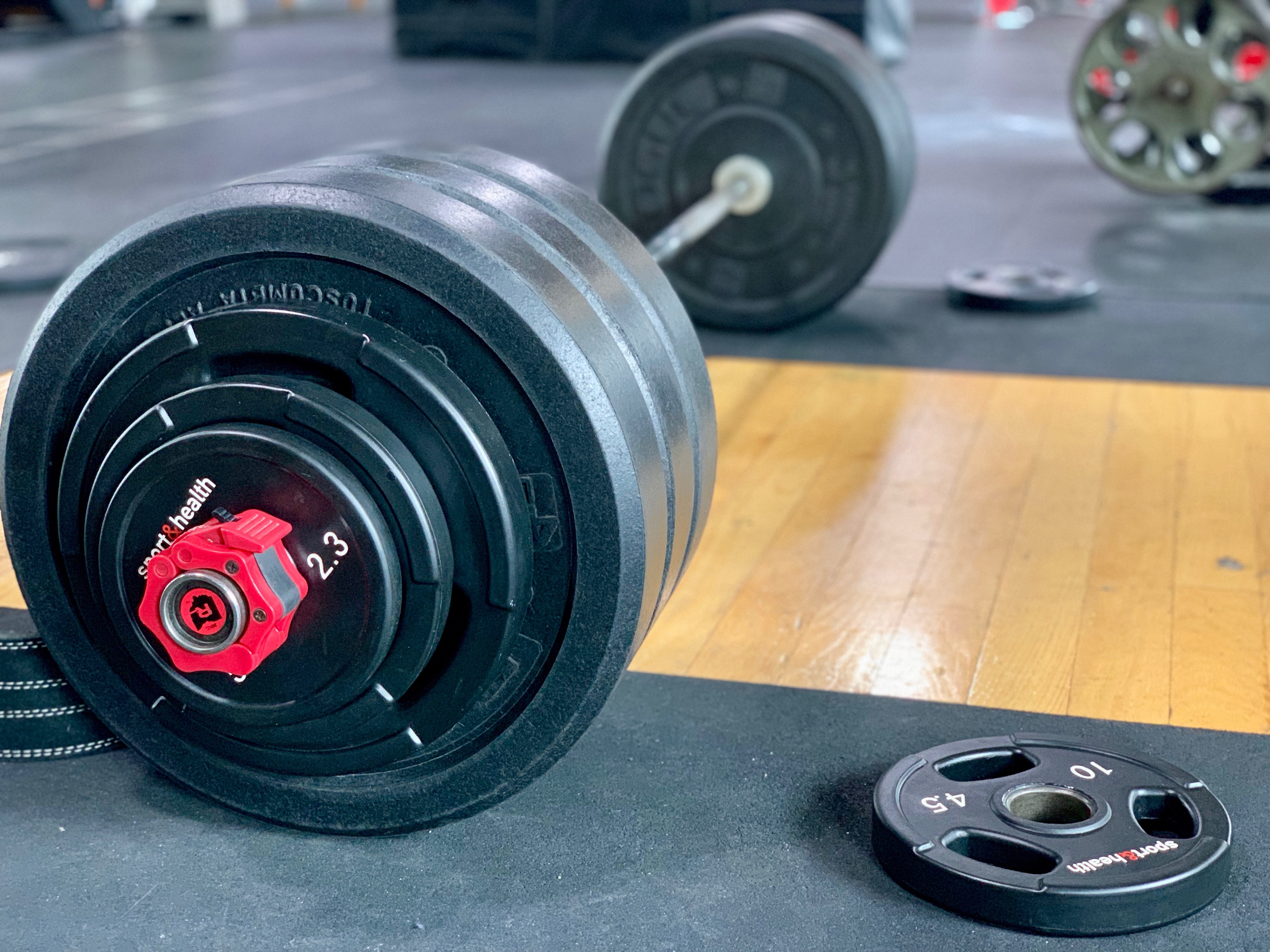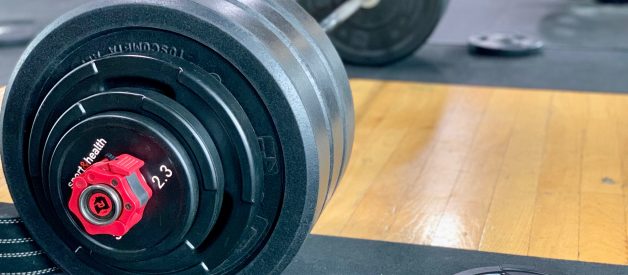
The summer of 2019 ends with Coolcicada?s version of Push-Pull-Legs. PPL has become so popular that commercial gym personal trainers are recommending it and Coolcicada?s version of in turn is probably the most popular version of PPL. This is a little bit of a departure from P.H.U.L. and P.H.A.T., the other two powerbuilding programs I ran this year, and even more from my training in general up to this point. At only three different days, PPL feels more like Stronglifts. But, unlike Stronglifts, is meant to be run 4?6 times a week and is much more effective in general.
I did thirteen weeks of this program, six at full volume, one deload, and then back at full volume one more time.
I will say that this is probably one of the most boring programs I?ve run. In my opinion even more boring than Boring But Big, which literally has the word ?boring? in the title. I did a version of it that did switch things up a bit, but if you do it as Coolcicada originally posted it, you literally just have three days of about 5?6 movements each to repeat over and over again until you get strong or something.
But boring is not necessarily bad, there?s a lot to be said for just getting into the gym and doing some work, knowing exactly where you?re going each day and just focusing on form and destroying yourself. But be aware that this program can turn into a slog. The reason it?s so popular, in my opinion, is that it really works.
What is Coolcicada?s Push-Pull-Legs?
What probably should have been lost to the sands of time, or the bytes of the internet, Coolcicada?s Push-Pull-Legs was posted one day in 2012 to Bodybuilding.com. The fact that we?re still talking about, making spreadsheets for it and asking questions about it on Reddit is a tribute to the basic fact that this program works. In an era of YouTube tutorials, stronger by science, academic papers and ebooks published daily on lifting, somehow this routine still comes up regularly. In the Richard Dawkins original formulation of the idea a meme, this program is a meme. And, it has shown surprising resiliency given its environment.
Like most PPL programs, Coolcicada?s has three days, one for pushing movements, one for pulling movements and one for leg movements. This type of split has become so accepted as effective, even Jim Wendler uses it for the assistance work recommendations in 5/3/1 Forever. Unlike some PPL programs, Coolcicada?s falls under what we would call powerbuilding: it has a mix of complex barbell movements at high weight, low reps and then more targeted movements at low weight, high rep work. So, it fits perfectly in my year of powerbuilding, and this regard, feels similar to P.H.U.L. and P.H.A.T.
And while there is a difference between targeting say chest and arms one day versus doing push exercises one day, it still ends up doing some targeting because of the nature of pushing and pulling. Most pulling exercises work the back and biceps while most pushing excercises work triceps, chest and shoulders. Hell, Coolcicada?s program seems understand that and puts technically ?pulling? movement lateral side raises on push day because it works the deltoids and a bit of other shoulder muscles.
I did a slightly updated of Coolcicada?s program where I swapped around power movements on push and pull days. Day A of push had bench press on high weight, low reps, and then overhead press on low weight, high reps. The next push day, B, swaps this, overhead becomes a power movement and bench press goes hypertrophy. On Day A of pull, I did pendlay rows and then on Day B I did deadlifts. Leg day remains unchanging, just focusing on squats as the only power movement.
The lifter is free to do as many days a week as they would like with PPL, though ideal progress is made by doing it six days a week. This is because most science tells us that we can punish each body part twice a week with heavy work before diminishing returns (or worse damage). But you can do any number of days a week you want, just rotate on through: Pull Day A, Push Day A, Legs, Pull Day B, Push Day B, Legs, repeat. I personally did four days a week (most of the time) because of scheduling problems. I found P.H.U.L. worked best when I actually got in all five days during my experience. So, I tried to keep with the five days a week as much as I could, but ended up about a little under half of the time doing five days a week and four times a week the rest of the time.
This program marks the first time all year I did a program with convential deadlifts in it. I thought this would mean quite the deload. In fact, it was the opposite. I picked up where I left off and then blasted through the last plateau I was stuck on last year. This really speaks to A) doing movements all year that compliment deadlifting and B) the efficacy of this program.
My Lifting Background Up to This Point
I have been program lifting for over four years. First six months were Stronglifts 5×5, then a year of Greyskull LP (during which I injured my back and spent months in recovery, losing a lot of deadlift and squat progress). I started 5/3/1 in February of 2017, switching to Forever style programing in February of 2018.
2019 I started various powerbuilding programs.
Before all that, I had been on fuckarounditis for two years of varying intensity and absolutely no progression plan in an apartment building gym similar to a hotel level gym. I spent my 20s largely an out of shape obese guy after being an athletic teenager.
Work Outside of the Gym
During this program, I continued to take a creatine supplement of 5g a day. I also attempted to continue taking a daily D3 5,000 IU vitamin supplement and Fish Oil for Omega-3 1000 mg daily, however I missed these two often. The vitamin D will become more vital for me to get back into the habit of once the days get shorter, while I should in general just get more Omega-3.
I have eschewd calorie counting for over a year now. I have a good idea of what goes in and out of me thanks to previously calorie counting though. So, I?m not flying blind, but I?m not bothering plugging numbers into a tracker these days. My weight has shuffled between 180?190 lbs for pretty much the whole year.
This program has no required cardio, so my weighted vest stayed in my closet. I walk, on average, 4 miles a day according to my Apple Watch. For the first half of this program, about 2.5 of those are while pushing my 40 pound toddler around in a stroller. That?s my cardio. Now that he?s started pre-school, I bike to the gym. Same distance, but now much faster. My walking overall is down because of this, but because I suffer from asthma, I can?t really do anything much more demanding than that anyway.
On days not at the gym, I continued my ab focused routine that I?ve been doing all through my 5/3/1 days. This is 15?30 minutes of ab roller, leg raises and push-ups with some stretching as well. This isn?t to get good abs for aesthetics, but a hold over from my physical therapy after I screwed up my back. My chiropractor noticed my core was very weak and was forcing too much work on my back and was probably a big contributing factor to the strain I suffered.
Impressions of the Program
This thing works. It?s hard to argue with results, but I probably will just a little bit because that?s what we?re all here for, right?
As I mentioned, my deadlift blew past my previous plateau of a little over four plates and I found myself just doing more and more weight every time I did them. They felt harder, for sure, but I would say grip was probably the biggest limitation I ran into and that probably comes from not having done any deadlifts in seven months.
I also enjoyed deadlifts being on ?pull? day. One frustrating thing about P.H.U.L. is the heavy deadlifts immediately after the heavy squats on lower power day. It?s insanely draining. P.H.A.T. doesn?t even have deadlifts programmed normally in part because I think Norton had a hard time deciding where to put them. But PPL solves this problem by doing splits by movement type rather than body part. Deadlifts are a pulling exercise, so they go on pull day rather than ?lower? day or ?back? day. It?s an amazing hack to solve what I think is one of the bigger problem for a lot of programming.
My squats also just got blasted. On my last week of P.H.U.L. I was trying to do 365 lbs for 3×5 and I failed every set. After I was done, I honestly thought I may have gone into shock. My fingers were shaking and my head felt light. It just completely destroyed me. I deloaded a bit to start this program and then one random Tuesday in the first six weeks I got to 3×5 365 lbs on the squat and just did them like I was walking down the street. I didn?t realize I had completely obliterated a pervious wall until after I got done because it just felt like another working set.
That said, my bench refused to move on PPL. Even with what I thought would be a more effective strategy in two, unconnected, bench days (one heavy, one hypertrophy). That may blow up one of my bigger critiques of P.H.A.T. Honestly, I?ve been at this plateau for almost half a year and may have to think more outside the box than just ?bench more? at different reps and weights.
I will say that heavy squats every leg day can be a mental burden after a while. Every leg day I went to the gym, I just knew I was going to do heavy squats and it sucked. It kept me from the fifth day at gym once and I just flat out skipped leg day another time. I think one way to make it more tolerable is to perhaps swap in something like front squats every other leg day just to switch things up. Not only would this be less mentally exhausting, but more variety, something this program desperately needs.
Because man, Coolcicada PPL is boring. The same rep/set scheme every day for almost every lift (the only reason that got broken up is because I ran different version of it than how it was originally written) done multiple times a week is brutal. While P.H.A.T. and P.H.U.L. suffered from this a little bit, at least each day was only done once a week, with PPL each day is often done twice a week, leading to more sameness. And on lifts that refuse to get better, it really feels like you are just beating your head against the wall, doing the same thing, sets, reps and even weight, over and over again.
That said, this program absolutely blew up my leg press. I added over 100 lbs to my working sets over the course of this 13 week program. Going from 270 lbs x 12 to 400 lbs x 12. Now I may have been a little low on my leg press to start (considering I squat in the mid-300s for working sets), but I started leg pressing long before this program and was trying to advance it all year and this program really did it for me.
Overall, I think PPL is super well programed for leg lefts, and reasonably well for upper body. I felt everything on leg day moved anywhere from insanely well to pretty good. But, while saw some good movement in my upper body lifts (facepulls, Pendlay and incline rows, lateral raises), many others frustratingly refused to move (chin-ups, bench, ez-bar curls).
Loading on this program, I tried to make it a little more realistic. For the last two programs I did, I loaded every time I hit the max reps in every working set. But for PPL I tried to avoid burn out (as mentioned above, by the end of P.H.A.T. I was really struggling), so I only upped the weight on squats when I got the max sets two times in row and on a lot of hypertrophy movements, I only moved when I felt I really blasted the sets and not really struggled. The result was a lot less deloading mid program and less burnout once the last week came around (though there definitely was some). As an ?intermediate? lifter, this seemed more wise than attempting near linear loading.
Aesthetically, I feel like I moved forward a bit. I had a random guy on the street tell me my arms look great. My wife asked me to stop walking through the house one night and flex my back muscles for her. I do feel like the insane amount of lateral side raises made my delts more defined. The transition from shredded (low body fat, ok muscle mass) to yoked (more bulk overall, but especially more muscle mass) has been a slow grind for me in general, so I don?t expect any one program to make massive movement on this front.
Conclusion
Lifting weights is a lot of moving heavy things in a similar way over and over again until you get strong, so when I say that PPL is boring in its repetition of movements, understand that it?s really not that much more than any other given program. Plus, the best way to get better at something is to do it over and over again, so doing six sets of lateral side raises at 20 reps a piece two times a week is going to make you pretty good at doing lateral side raises. At least it sure did for me.
A mantra on I?ve repeated often in my reviews of lifting programs is that you can?t argue results and PPL keeps that statement true. By the final week of the program I got a little bit of senoritis and just wanted to run out the clock (including skipping a leg day), but I can?t deny the way it moved a lot of my lifts. It?s also super easy to figure out, with common movements that use common equipment. I?d honestly recommend it to anyone that doesn?t have a short attention span.
Overall: Recommended
As to where we go for where with about 3.5 months left of my year of powerbuilding? It?s time to go back to the O.G.: Boring, But Big. There?s been a fair amount of rumbling about Jim?s variation called Boring, But Big: Beefcake Training and so needing another powerbuilding program and wanting to revisit to the program that I first reviewed when I started doing this, that?s my next stop. The hardest part will be setting some training maxes after about 9 months of not testing my maxes. But I?ll err on the side of lighter to get in as much volume as possible.


